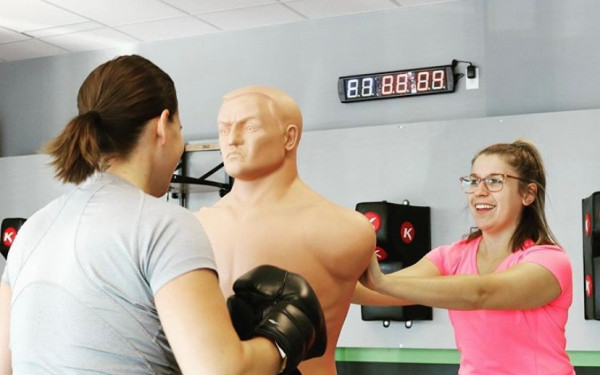Integral Intervals
The Importance of the Oft-Overlooked Interval Training
Interval training is a form of exercise that is seen by many personal trainers as an integral part of any workout.
Yet if you go to the gym, many self-motivated patrons, whether they are athletes or casual goers, do not include it in their routine. The gym is typically crowded and if you are working out correctly, an intense workout is not a lot of fun. The inclusion of interval training can not only cut your workout time in half, but regardless of your training goals, the benefits of this system will provide noticeable results.
To start, find your maximum heart rate by subtracting your age from 220. Then use a stationary bike, elliptical, rowing machine or cardio machine of choice to get your heart rate to within 85 per cent of your maximum heart rate—this is going to suck. The good news is you only have to do this for 30 seconds.
After going as hard as you can for 30 seconds, take a one minute active recovery period where the speed and resistance is drastically turned down, but you are still moving. Lactic acid—the chemical build-up in muscles resulting in a feeling of muscle fatigue and sometimes nausea—has a chance to be flushed out, while your heart rate is maintained. Don’t forget to keep breathing. After the recovery period, ramp it up again for 30 seconds. Repeat this cycle eight to 12 times.
Personal trainer Katie Dunn from Vancouver works with a team of professionals at the gym—the people responsible for turning Hugh Jackman into Wolverine for the X-Men movies.
“For people trying to keep their muscle mass, performing long-duration moderate-intensity exercise may put your body in a catabolic state in which you will start losing muscle mass,” she explained.
When it comes to interval training, “increased calorie expenditure in a short amount of time keeps your metabolic rates elevated for hours following a workout. It allows the body to better convert stored carbohydrates into energy and speed up calorie burning,” said Dunn.
A well-balanced workout routine is a feedback loop. Interval training elevates the heart rate and continues to burn fat hours after the you’ve left the gym, while resistance training builds muscle mass which in turn burns more calories. Rather than simply doing bicep curls in the mirror, you’ll find that a holistic approach will take you to peak physical condition much faster.
“It is more effective than steady-state exercises when it comes to increasing your V02 max [maximum oxygen uptake].
Also, alternating fast and slow movements during a work out keeps the exercises more mentally engaging. Being present during training means that you will get more out of each work out,” said Dunn.
Anyone with health problems should consult a doctor before beginning a fitness routine.
Whether you are a guy, girl, body builder, athlete or a novice, you shouldn’t be spending more than 45 minutes in the gym if you are including interval training. Make sure to stretch before and after and get some form of lean protein within an hour.
This article originally appeared in Volume 31, Issue 22, published February 8, 2011.

__900_900_90.jpg)
_600_832_s.png)


_600_375_90_s_c1.jpg)

